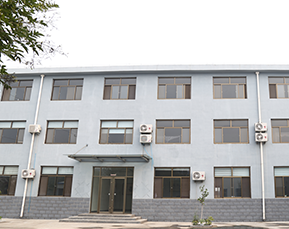 Afrikaans
Afrikaans  Albanian
Albanian  Amharic
Amharic  Arabic
Arabic  Armenian
Armenian  Azerbaijani
Azerbaijani  Basque
Basque  Belarusian
Belarusian  Bengali
Bengali  Bosnian
Bosnian  Bulgarian
Bulgarian  Catalan
Catalan  Cebuano
Cebuano  Corsican
Corsican  Croatian
Croatian  Czech
Czech  Danish
Danish  Dutch
Dutch  English
English  Esperanto
Esperanto  Estonian
Estonian  Finnish
Finnish  French
French  Frisian
Frisian  Galician
Galician  Georgian
Georgian  German
German  Greek
Greek  Gujarati
Gujarati  Haitian Creole
Haitian Creole  hausa
hausa  hawaiian
hawaiian  Hebrew
Hebrew  Hindi
Hindi  Miao
Miao  Hungarian
Hungarian  Icelandic
Icelandic  igbo
igbo  Indonesian
Indonesian  irish
irish  Italian
Italian  Japanese
Japanese  Javanese
Javanese  Kannada
Kannada  kazakh
kazakh  Khmer
Khmer  Rwandese
Rwandese  Korean
Korean  Kurdish
Kurdish  Kyrgyz
Kyrgyz  Lao
Lao  Latin
Latin  Latvian
Latvian  Lithuanian
Lithuanian  Luxembourgish
Luxembourgish  Macedonian
Macedonian  Malgashi
Malgashi  Malay
Malay  Malayalam
Malayalam  Maltese
Maltese  Maori
Maori  Marathi
Marathi  Mongolian
Mongolian  Myanmar
Myanmar  Nepali
Nepali  Norwegian
Norwegian  Norwegian
Norwegian  Occitan
Occitan  Pashto
Pashto  Persian
Persian  Polish
Polish  Portuguese
Portuguese  Punjabi
Punjabi  Romanian
Romanian  Russian
Russian  Samoan
Samoan  Scottish Gaelic
Scottish Gaelic  Serbian
Serbian  Sesotho
Sesotho  Shona
Shona  Sindhi
Sindhi  Sinhala
Sinhala  Slovak
Slovak  Slovenian
Slovenian  Somali
Somali  Spanish
Spanish  Sundanese
Sundanese  Swahili
Swahili  Swedish
Swedish  Tagalog
Tagalog  Tajik
Tajik  Tamil
Tamil  Tatar
Tatar  Telugu
Telugu  Thai
Thai  Turkish
Turkish  Turkmen
Turkmen  Ukrainian
Ukrainian  Urdu
Urdu  Uighur
Uighur  Uzbek
Uzbek  Vietnamese
Vietnamese  Welsh
Welsh  Bantu
Bantu  Yiddish
Yiddish  Yoruba
Yoruba  Zulu
Zulu Different Types of Idlers Utilized in Belt Conveyor Systems for Improved Efficiency
Types of Idlers in Belt Conveyors
Belt conveyors are vital components in various industries, providing an efficient means of transporting materials over considerable distances. Central to the performance of these systems are idlers—crucial elements that support the conveyor belt and facilitate smooth operation. Understanding the types of idlers available can help in selecting the right system for specific applications, optimizing transport efficiency, and extending equipment life.
1. Carrying Idlers
Carrying idlers are primarily designed to support the weight of the loaded conveyor belt. They are typically positioned along the conveyor's length, and their primary function is to ensure that the belt maintains its shape while transporting materials. Carrying idlers come in several configurations, including trough, flat, and vertical.
- Trough Idlers The most common type, trough idlers are shaped to form a V or a U, allowing them to cradle the conveyor belt and load effectively. This design minimizes spillage and enhances material containment, making them ideal for bulk materials such as coal, grain, or aggregates.
- Flat Idlers Used mostly for return pathways where the material is unloaded, flat idlers support the belt without any structural curve. They are suitable for lighter loads or where the material is not prone to spilling.
- Vertical Idlers and Adjustable Idlers Vertical idlers can help in transferring materials at steep angles, while adjustable idlers can be modified according to the load and angle of the belt.
2. Return Idlers
Return idlers support the conveyor belt as it returns to its feeding point. They play a fundamental role in maintaining the belt's tension and ensuring proper alignment. Return idlers can be flat or cylindrical, depending primarily on the configuration of the conveyor.
- Flat Return Idlers These are standard for most conveyor systems, providing a simple and efficient means of supporting a belt when it is returning to the starting point.
- Cylindrical Return Idlers These idlers can reduce belt wear and maintain alignment more efficiently than flat ones due to their rolling action, offering less friction and potentially extending the system's lifespan
.types of idler in belt conveyor

3. Impact Idlers
Impact idlers are specifically designed to absorb the energy of falling materials and reduce the impact on the conveyor belt and structure. They are usually placed at loading points where materials are dropped onto the conveyor system.
The design of impact idlers often includes extra cushioning and resistance materials to withstand severe impacts and ensure that the belt does not suffer from fractures or tears. By minimizing damage to both the belt and the carrying idlers, impact idlers contribute to overall system durability.
4. Training Idlers
Training idlers are crucial for maintaining the proper alignment of the conveyor belt. Misalignment can lead to excessive wear and operational failure, making the role of training idlers vital. They help guide the belt properly, often utilizing a pivoting mechanism to adjust the belt orientation dynamically.
There are various types of training idlers, including
- Self-aligning Idlers Automatically adjust to correct any misalignment in real-time, enhancing the longevity and reliability of the conveyor system.
- Side Roller Idlers These idlers are placed on the side of the belt to prevent lateral movement and ensure that the materials are centered, this aids to improve the efficiency and efficacy of the conveyor operation.
Conclusion
In summary, idlers are essential components of belt conveyor systems, serving various purposes from carrying materials to ensuring proper alignment and absorbing impact. Understanding the different types of idlers—carrying, return, impact, and training—enables industry professionals to select the appropriate configuration for their specific needs, thereby optimizing performance, reducing operational costs, and prolonging the life of the equipment. This knowledge is crucial for enhancing productivity in any operational setup involving belt conveyors.
-
Revolutionizing Conveyor Reliability with Advanced Rubber Lagging PulleysNewsJul.22,2025
-
Powering Precision and Durability with Expert Manufacturers of Conveyor ComponentsNewsJul.22,2025
-
Optimizing Conveyor Systems with Advanced Conveyor AccessoriesNewsJul.22,2025
-
Maximize Conveyor Efficiency with Quality Conveyor Idler PulleysNewsJul.22,2025
-
Future-Proof Your Conveyor System with High-Performance Polyurethane RollerNewsJul.22,2025
-
Driving Efficiency Forward with Quality Idlers and RollersNewsJul.22,2025





























